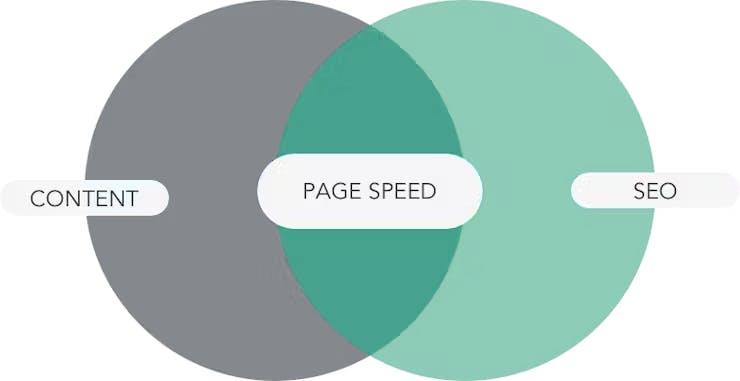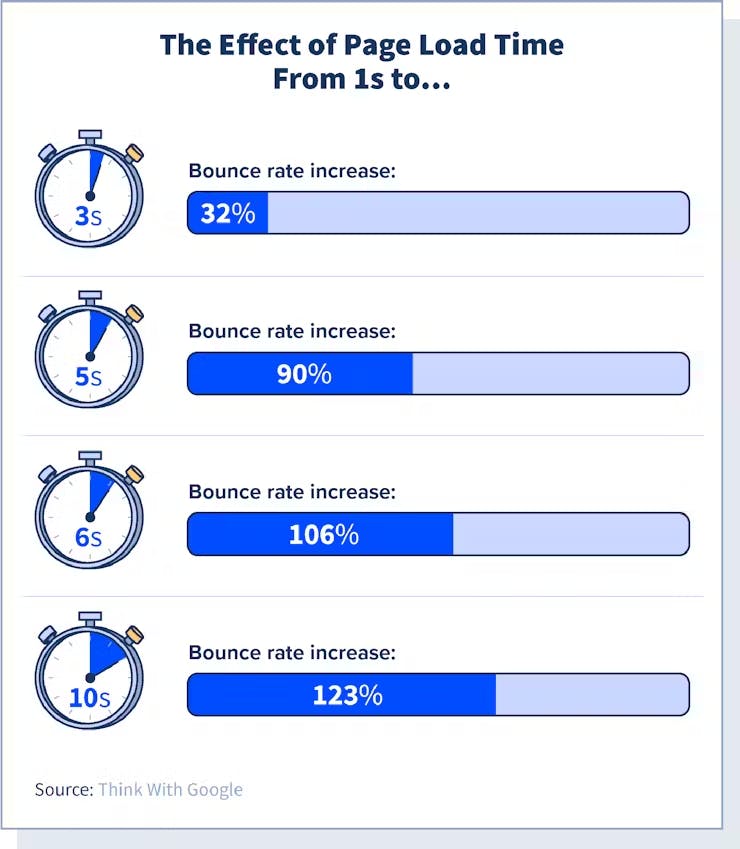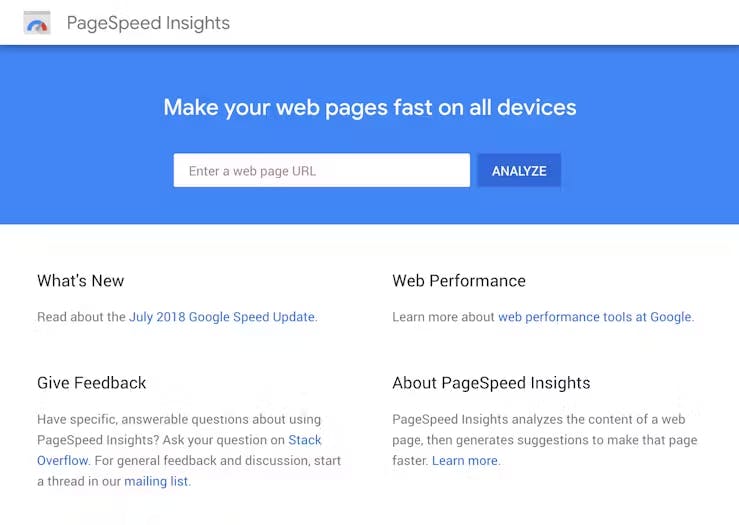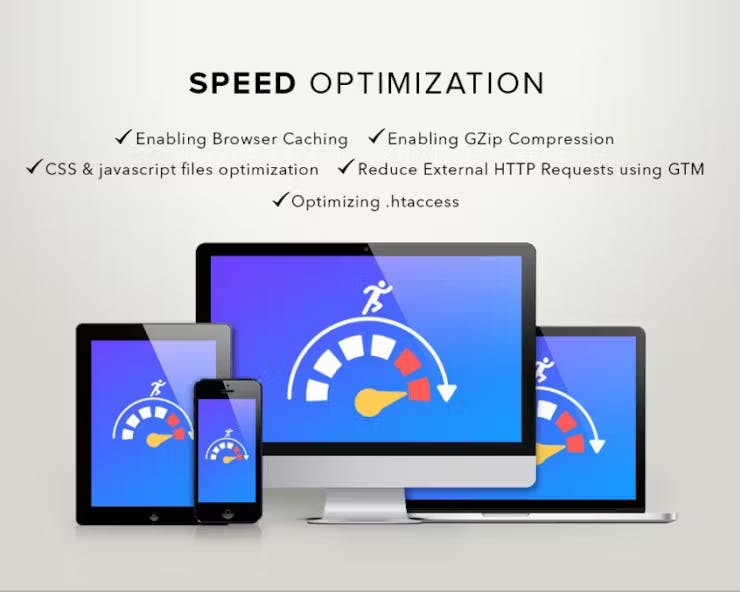- Last Updated Jun 23, 2025Published Date Jan 08, 2025
If you’ve been wondering why your website isn’t ranking even after doing everything for SEO, this blog is for you. One of the most underrated yet powerful SEO factors in 2025 is your website speed. With every Google algorithm update, user experience is getting prioritized more than ever, and a slow-loading site simply won’t survive in search rankings.
As a leading SEO company in Kolkata, we get this question all the time —"Does page speed really impact SEO that much?"
The answer is a big YES.
Whether you're running Google Ads, trying to boost organic traffic, or improving your conversion rate, website speed is now non-negotiable.
So, here Our seo expert in Kolkata will break down exactly why website speed is important for SEO in 2025, what’s changed with Google’s latest Core Web Vitals, and what action you should take today. But first, let's go through the fundamentals.
What is the definition of website speed?

Website speed, often known as website performance, means how fast a browser can load perfectly working web pages from a particular site. Low-performing sites that take a long time to load in a browser may drive visitors away. Sites that load fast usually get more traffic and have higher conversion rates.
Every company nowadays aims to please its website visitors by providing an excellent user experience. With the advancement of technology, people are getting more impatient. So, the majority are unwilling to wait even two seconds for a web page to load.
If it dissatisfies them with your page speed, they will move to your competitor. With today's rapidly changing consumer behavior, one cannot afford to ignore the significance of website speed.
Similarly, poor site performance may lead to bad search engine rankings and decreased total site traffic.
The following are a few facts on why website speed is important to help you understand why page speed matters:
- 40% of internet users will leave a website that takes over 3 seconds to load.
- 50% of all visitors want a website to load in 2 seconds or fewer.
- 70% of visitors who are dissatisfied with your website's performance will never return.
With the rollout of AI-driven search and the rise of voice and visual search platforms, load speed is even more critical to be indexed properly and surface on SERPs.
It has a significant effect on SEO ranks on desktop and mobile (particularly with Google's mobile-first index), sponsored advertising on Google with an impact on quality score, and overall user experience and conversion.
Read This:
Why website speed is important for SEO
Speed Affect SEO

Site speed is a ranking element and has an even bigger ranking impact on a mobile device. The reason site speed is a ranking factor is that it indicates a good user experience. Google recommends a page load time of fewer than 3 seconds for websites on both desktop and mobile devices.
A user will usually remain on a site longer if the site performance is quicker. They will increase the conversion rate and lower the bounce rate. Thus, a fast site speed results in a better user experience. And that's why seo agency in Kolkata consider site speed an important factor for online business success
Fast websites give a great website score. A better website score means higher ranks in SERPs.
Google's latest guidelines for Core Web Vitals now make Interaction to Next Paint (INP) an essential user input responsiveness signal, directly impacting rankings.
Recommended: Detailed SEO Explanation- Everything You Need to Know for SEO Strategy!
Effect on Paid Search

Cheap and cost-effective fees for your keyword bidding are decided by your quality score. It means how relevant Google considers your website's landing page to a search term. Slow site performance may eventually seem to Google like a bad user experience, lowering your quality score.
If your site has a poor quality score, it is very difficult to appear organically in the SERP and your advertisements will not appear. As you can see, the quality score has a significant effect on PPC.
With a higher quality score, you'll get a better and higher ad position, as well as a cheaper cost per click.
Impact on Social Ads
Facebook stated that site performance and user experience will determine whether your advertisements are prioritized. While there are many variables that affect Facebook's algorithm with social advertising, a quick load speed is given a higher priority on the newsfeed.
Instagram and LinkedIn now also consider landing page experience, including load speed, when scoring ad relevance. Fast websites see better CTRs and lower CPC.
Conversion rate

Several research has shown that site speed affects conversion rate. Fast-loading sites not only keep visitors longer, but they also convert at a greater rate. Here is some real-life example:
- Mobify shortened its homepage's load time by 100 milliseconds that resulting in a 1.11% growth in session-based conversion.
- AutoAnything saw a 12-13% boost in sales after reducing website load time in half.
- Walmart found that a one-second reduction in page load time boosted conversions by 2%
As a result, increasing site speed is an important component of conversion rate optimization. It is preferable to capture individuals during their purchasing decision with a quick and easy-to-navigate site to better guide them on their road to conversion.
Bounce rate:

The bounce rate is the proportion of visitors who leave a website after just seeing one page. If a website does not load in a few seconds, users are likely to shut the window or click away. Poor sites usually have a relatively high bounce rate. Bounce rate is also a ranking element for SEO relevance; therefore, having a reduced bounce rate should be a top goal for you.
With the increase in zero-click search results, websites now need to offer faster content interaction (via INP) and deliver value quickly to reduce bounce.
User experience:
As we have already discussed, long page load times and slow reaction times in user activities generate a negative user experience. Waiting for material to load becomes irritating for users and may cause them to abandon the site entirely.
Google’s user-centered metrics in the Page Experience report (in Google Search Console) now measure responsiveness and stability more granularly. It's critical to align performance improvements with these evolving metrics.
What variables influence website speed?

Page weight
The number of resources required to load a website has a significant effect on site performance. Large JavaScript files, video content, large CSS files, and high-resolution pictures all contribute considerable 'weight,' or load time, to a website.
Keep websites light by small file sizes and quick loading pages. JavaScript functions with third-party pop-up advertisements or homepages with changing backgrounds raise overall page weight.
Conditions in the network
Even though a website is lightweight, it may take a long time to load in browsers owing to network latency. Poor local networking equipment and the quality of the ISP's services influence network connection.
There are still methods for providing content fast to devices with a slow network connection.
CDNs increase website performance by caching material in many places across the globe. CDN caching servers are actually closer to target consumers than the hosts or source servers.
When content travels a great distance to reach its destination, network latency increases. For example, if a website's HTML and CSS files are housed in Kolkata and its pictures in Delhi, a user in Bangalore will have to wait as these files transit hundreds of miles to their device.
Modern CDNs now utilize edge computing and HTTP/3 protocols to further reduce round-trip latency and boost perceived performance.
Must Read: Top Benefits of SEO for Small Businesses
How Site Speed Affects SEO: What Every Website Owner Must Know
Still wondering how much site speed matters for SEO? Let’s break it down.
Google has confirmed that page speed is a ranking factor, not just for desktop, but especially for mobile page speed. If your website's speed is slow, it directly affects how search engines like Google see your site and, ultimately, how your users experience it.
👉 A slow website can make your bounce rate spike, your conversions drop, and your SEO ranking fall short, even if the rest of the page is well-optimized.
👉 A fast website improves engagement, helps your pages appear higher in the SERPs, and boosts overall SEO performance.
Whether it's one specific page or your entire site, speed matters. A fast load speed means search engines can crawl and index pages on a website more efficiently. Plus, a great speed score improves user satisfaction, leading to more time on site, better conversions, and fewer abandoned visits.
If you’ve been putting in SEO efforts but not seeing results, page speed might be the missing link. It’s time to check your page speed, identify what's slowing it down (like render-blocking resources or heavy page elements), and take site speed improvements seriously.
💡 Pro Tip: Use Google PageSpeed Insights for a page speed test. It gives you real-time suggestions to speed up your website and improve your page speed metrics.
So yes, speed isn’t just about performance, it’s about visibility, rankings, and user trust. If you want to improve your site speed and your SEO together, this is where you start
What are the most essential website page speed metrics?

Load time
Loading time is the time it takes for a complete website to load into the browser. It means that every HTTP request must be satisfied. Nearly every single page on the Web necessitates many HTTP requests in order to load additional resources for the page's basic HTML.
Time To First Byte (TTFB)
TTFB is the time that elapses between a browser's request for a website and the arrival of the first byte of the answer. Although overall load time is more significant, TTFB is still considered when evaluating website speed, and it may influence SEO.
Round Trip Time (RTT)
RTT is the time it takes for a request to go to the origin server and the answer to travel back to the device that started the request. The higher the number of round trips required by a website, the bigger the latency.
Interaction to Next Paint (INP)
INP tracks how quickly your site visually responds when a user interacts, like clicking a button or tapping a link. This metric replaces FID (First Input Delay) and is now a key part of Google’s Core Web Vitals. A low INP means a faster, smoother experience for users, and that helps with SEO rankings.
Total Blocking Time(TBT)
TBT measures how long your website is "frozen" and unable to respond during loading, mostly caused by heavy JavaScript running in the background.
TBT is used in lab tools like Lighthouse to estimate responsiveness before real-world INP data is available. A high TBT usually means slower interaction, which can hurt user experience and SEO.
Testing the Speed of Your Website

Now you understand how website speed and SEO are related, you must want to check yours. Our website designer performs this using a variety of technologies. The best part about these tools is that they are completely free and allow you to run as many reports as you like.
Google site speed tool PageSpeed Insights and GTMetrix are our major tools for this. The procedure is straightforward and involves an automatic examination of your website's URL. The report will then break down the page speed insight and suggest changes.
You may use this report as a baseline before making any improvements. After making changes, re-run the analysis to monitor your progress.
Consider also using tools like WebPageTest, Lighthouse CI for automation, and Chrome UX Report (CrUX) to track field performance over time.
How to improve your page speed?

The main answer on how to improve your website speed is to remove excess components that slow down your website. Here are the points to optimize your website for the fastest and most efficient site speed:
- Reduce the use of landing page redirects, plugins, and link shorteners.
- Use compressed files to save mobile rendering time.
- Omit any render-blocking JavaScript.
- To reach your target audience fast, use a high-quality content delivery network (CDN).
- Image optimization reduces file size without sacrificing visual quality.
- To reduce page render time, use asynchronous scripts.
- Adjust the content dynamically for slower connections/devices.
- Adopt modern image formats like WebP and AVIF.
- Implement lazy loading and resource prefetching.
- Use HTTP/3 and Brotli compression.
- Optimize critical rendering paths by reducing third-party scripts.
- Monitor INP using real user monitoring (RUM) tools.
Wrap up
We hope you now understand why website speed is important for SEO and how to improve website speed. A slow-loading website may cause visitors to leave and return to the search results. Then they may wind up visiting your competitor's website.
Ensure your website has excellent and fast loading times so that prospective consumers do not lose interest and continue exploring your website. With excellent page speed, you will also be able to enhance your search engine rating.
If you want a lightning-fast website, consult the best website design company! Our experienced web designers and developers work for business owners to help them generate more leads with great websites.
Start Growing in Just 3 Simple Steps
We assess your goals, craft a tailored strategy, and finally implement it so you can confidently grow your business.
Book a free consultationJoin Our WhatsApp Channel
Join our privacy friendly whatsapp channel and stay up to date with the latest news, updates, and exclusive offers. Join our community today!
Get Free AccessSolutions ❇️
Popular Gigs 📈
Tools 🛠️
- Ads Budget Calculator
- UnifyleadsSoon
- ShareUsReviewSoon
- BrandItSoon
- GrowSoon
FavFly Solutions for Your Digital Growth:
SEO Services in Kolkata | Local SEO Company in Kolkata | Digital Marketing Company in Kolkata | Social Media Marketing Services in Kolkata | WebStudio Website Development | UGC Reels Creation Services | Google My Business for Gynecologists | Google My Business for Restaurants | Google My Business Guide | Google My Business for Dentists | Google My Business for Interior Designers | Google My Business for Doctors | How Google My Business Profile Works* About Us : At FavFly, we redefine digital marketing by focusing on what truly matters: your growth. We don’t just offer services like SEO, SMM, and website development – we become an integral part of your success story, providing strategic guidance and innovative solutions that empower your business to reach new heights.










